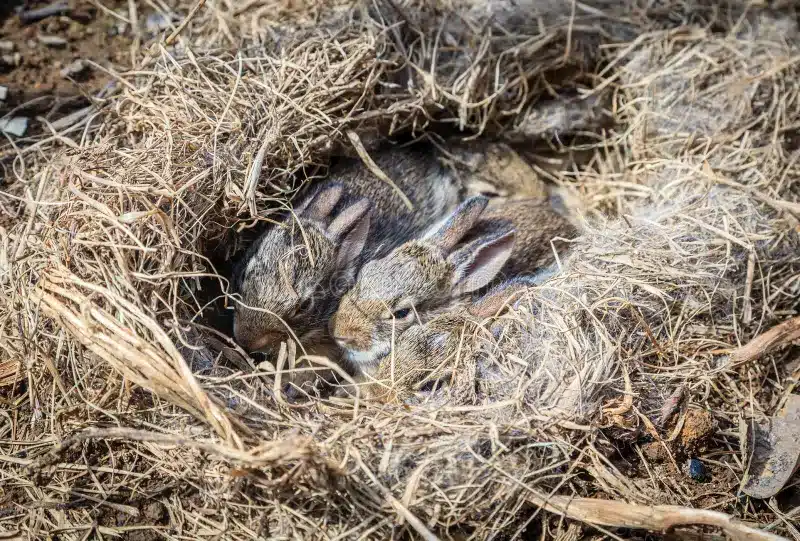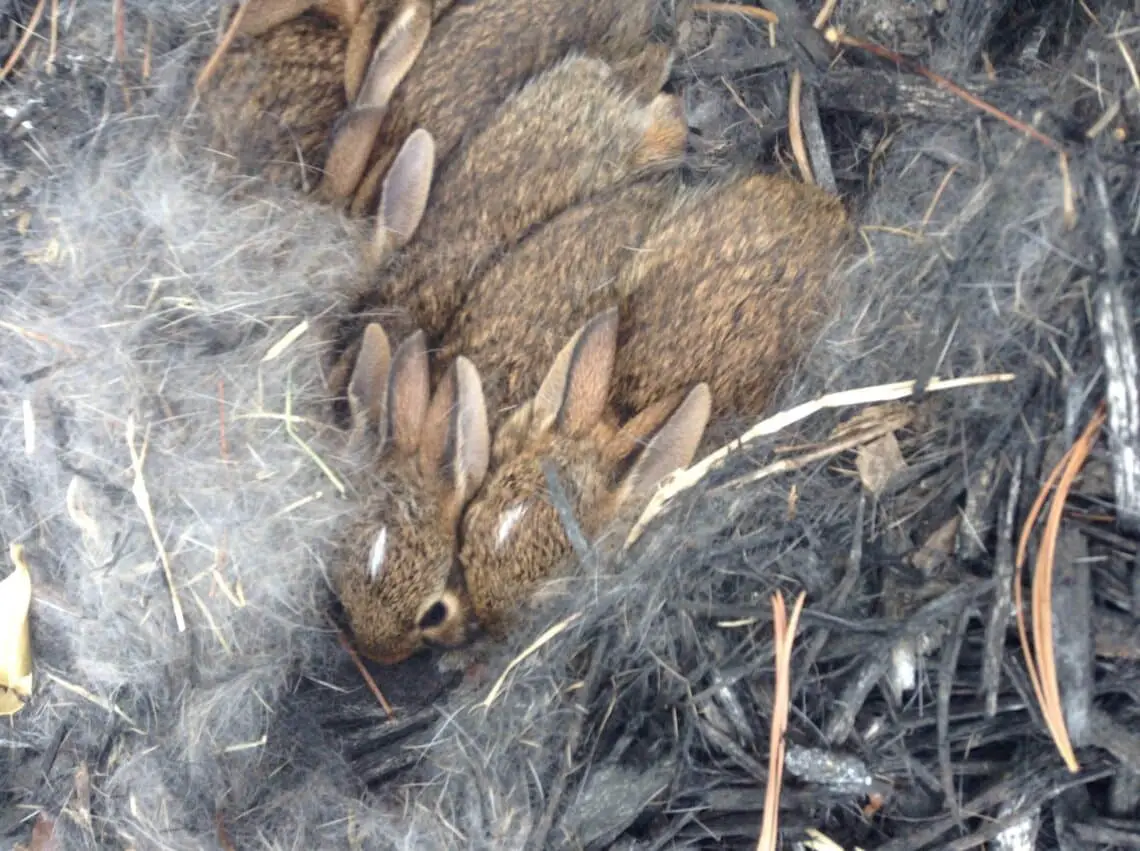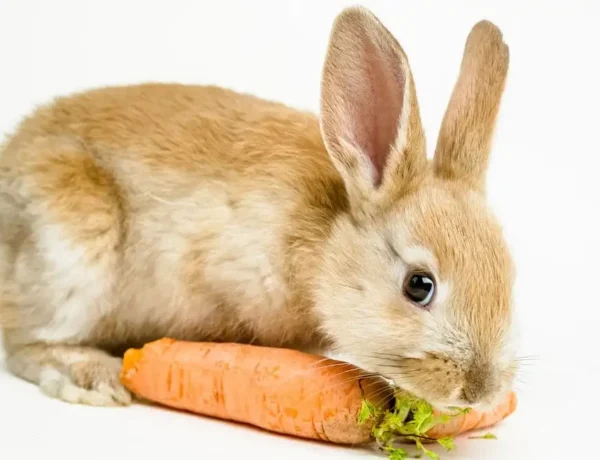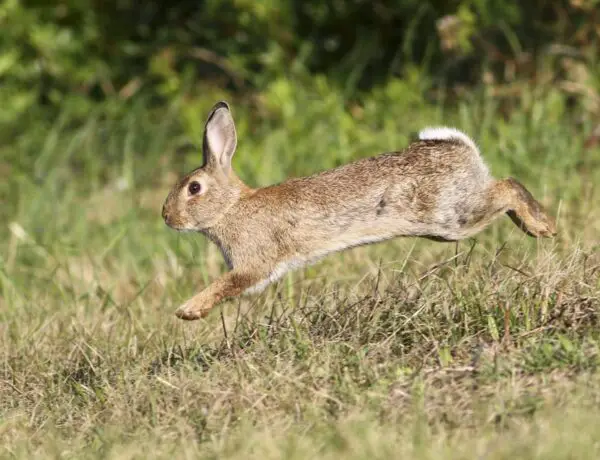Introduction
How To Find Rabbit Nests: The fascinating world of discovering rabbit nests! Whether you’re an avid nature enthusiast, a curious individual, or simply interested in observing wildlife, finding rabbits thump nests can provide a unique and rewarding experience. These hidden gems offer a glimpse into the intricate lives of these small mammals, showcasing their nesting habits, maternal instincts, and survival strategies. In this guide, we’ll delve into the art of locating rabbit nests, exploring their habitats, understanding their behavior, and ensuring minimal disruption to these delicate ecosystems. Embark on a journey of observation, patience, and respect for nature as we unravel the secrets of how to find rabbit nests and gain a deeper appreciation for the natural world around us.
The captivating realm of rabbit nest discovery—a journey that unveils the wonders of wildlife and the art of observation. Delving into the quest to find rabbit nests opens a door to the intricacies of these furry creatures’ lives, shedding light on their nesting preferences, survival strategies, and nurturing instincts. This guide is your gateway to exploring the enchanting world of rabbit habitats, deciphering their behavioral patterns, and learning how to respectfully navigate their ecosystems. With careful steps and an inquisitive spirit, we invite you to join us on an expedition that unravels the mysteries of locating rabbit nests—a voyage that promises not only an up-close encounter with nature but also a deeper understanding of the delicate balance that exists within it.
The pursuit of finding rabbit nests is a captivating endeavor that grants us a privileged glimpse into the lives of these small yet remarkable creatures. In this guide, we will delve into the art of uncovering these well-concealed treasures, exploring the diverse habitats rabbits call home, deciphering their behaviors, and unveiling the mysteries of their nesting habits. This adventure is an opportunity to connect with the natural world, offering insights into the delicate balance of ecosystems and the importance of coexisting harmoniously with the wildlife that surrounds us. So, prepare to venture into the underbrush, armed with knowledge and curiosity, as we embark on the quest to discover the captivating realm of rabbit nests.

Where do rabbits build their nests?
The ideal rabbit nesting spots are areas near bushes or trees and under (or near) covered porches and sheds. However, it’s not uncommon for rabbits to build nests in open spaces in your yard as well. This means that rabbits may build nests covered with dead grass and twigs in open spots.
Ground Nests: Many rabbit species create nests directly on the ground. These nests are often shallow depressions lined with grass, fur, leaves, and other available materials. Ground nests offer camouflage and are typically well-hidden within vegetation or natural features. Examples of ground nesting rabbits include cottontail rabbits.
Under Brush and Vegetation: Rabbits have a knack for nesting under low-lying vegetation, shrubs, and thickets. The shelter provided by these plants helps shield nests from predators and adverse weather conditions. The dense foliage provides excellent concealment, making these spots ideal for rabbit mothers to give birth and nurture their young.
Burrows and Burrow Systems: Certain rabbit species are known for creating intricate burrow systems. These underground networks offer a secure environment for nesting, rearing young, and protection from predators. The European rabbit is a notable example of a species that constructs extensive burrow systems, complete with multiple chambers for various purposes.
What do rabbits nests look like?
Rabbit nests look like a small patch of dead grass; sometimes there is a distinctive hole into the nest, and other times it is a simple grass covering over the rabbits.
Appearance: Rabbit nests are often simple in design, reflecting the practical nature of their construction. They are typically shallow depressions in the ground or within vegetation. The nests may appear as flattened areas, lined with a mixture of materials like grass, leaves, fur, and sometimes even feathers. The arrangement of these materials provides insulation and comfort for the young rabbits.
Camouflage: Camouflage is a key feature of rabbit nests. The materials used to line the nest are often chosen to blend in with the surroundings, making the nest difficult to spot for potential predators. The muted colors and natural textures help the nest remain inconspicuous.
Location: The location of a rabbit nest is crucial for the safety of the young. Nests are typically situated in areas that provide cover and protection. Ground nests are often found under brush, shrubs, or tall grasses, which help shield them from predators and weather. Some rabbit species dig burrows underground, creating intricate systems with multiple chambers for nesting, sleeping, and protection.
What is the easiest way to find rabbits?
Find a Rabbit Habitat
Abandoned barns often provide the cover they crave, as well as hollow logs, fence rows, deadfall, or brush piles. Since they’re wary and wily, it’s often easier to locate them by finding their favorite foods; clover, alfalfa, and blackberry bushes are just a few cottontail favorites.
Scout Suitable Habitats: Knowing where rabbits are likely to be found is half the battle. Look for areas with dense vegetation, such as fields, meadows, open grasslands, and the edges of woodlands. Rabbits often seek cover in these places while foraging for food.
Be Patient and Still: Rabbits are wary creatures and can be easily spooked by sudden movements or noises. Once you’ve identified a potential habitat, find a comfortable spot to sit or stand. Remaining still and patient increases your chances of rabbits becoming accustomed to your presence and resuming their normal activities.
Use Binoculars: Binoculars are valuable tools for observing wildlife from a distance without causing disturbance. Scan the area carefully and slowly with binoculars to spot any movement or signs of rabbits.
How deep is a rabbits nest?
Nests are dug in the ground and lined with grass and loose fur. Nests are relatively small, about 4″ across and 4″ deep. The female rabbit, or doe, typically has 2 or 3 litters per season with 3-8 rabbits per litter. After brooding, the nest is abandoned.
Species and Habitat: Different rabbit species exhibit diverse nesting behaviors influenced by their natural habitats and evolutionary adaptations. Ground-nesting rabbits, like cottontails, often create shallower nests compared to species that utilize burrows. The habitat’s characteristics, such as the type of vegetation and the presence of predators, also play a role in determining nest depth.
Ground Nests: Ground nests, crafted by many rabbit species, tend to be relatively shallow depressions in the earth. These nests are lined with materials like grass, leaves, and fur, which offer insulation and comfort for the kits. Ground nests are strategically placed in hidden spots, under brush, and amidst vegetation to provide camouflage and protection.
Burrow Nests: Certain rabbit species, such as the European rabbit, construct more elaborate nests within burrow systems. These burrows can be several feet deep, with separate chambers for nesting, sleeping, and evading predators. The depth of these nests provides a layer of insulation against temperature fluctuations and additional protection for the kits.
Do rabbits hide their nests?
Rabbits “hide their nests in plain view,” often putting them in the open, for example in the middle of the lawn, as well as in brush piles and long grass. If you find a nest that has been disturbed, do all you can to restore and protect it rather than bring the infants inside.
Predator Avoidance: Rabbits are natural prey animals, and their nests, along with their young kits, are highly sought after by a range of predators, including birds of prey, foxes, coyotes, and snakes. By hiding their nests, rabbits reduce the likelihood of predators stumbling upon them and the potential loss of their young.
Camouflage and Protection: Rabbit nests are strategically constructed to blend seamlessly with their surroundings. The choice of nesting materials, such as grass, leaves, and fur, helps the nest blend in with the environment. This camouflage offers the nests and their occupants a layer of protection, making them difficult to spot even for predators with keen senses.
Vulnerable Kits: Newborn rabbit kits are born blind, hairless, and unable to move about on their own. Their survival largely depends on the mother’s care and the hidden nature of the nest. By keeping the nest hidden, mother rabbits can tend to their kits without drawing attention, ensuring their safety during the initial stages of development.
What time of day do rabbits have babies?
Oftentimes, the rabbit will hold off on giving birth until nighttime or early morning. That is the time when the rabbits feel safest from predators. Once the baby rabbits, called kits, are born, the mother may cover them with more of her fur.
Breeding Seasons
Rabbits exhibit distinct breeding seasons, varying between species and geographical regions. While some rabbit species can breed year-round in more temperate climates, others have specific times when they are more likely to reproduce. Breeding seasons are influenced by factors like the availability of food, temperature, and the length of daylight hours.
Spring and Summer
Many rabbit species tend to give birth during the warmer months of spring and summer. These seasons offer optimal conditions for the growth and development of young kits. As temperatures rise, food becomes more abundant, and the extended daylight hours provide ample time for foraging and caring for the young.
Timing Within the Day
Rabbits, particularly those that are crepuscular—active during dawn and dusk—often time their activities to minimize exposure to predators. This includes giving birth during the twilight hours, when the risk of being detected by diurnal predators is lower. By giving birth during these periods, rabbits capitalize on the cover of darkness while still taking advantage of favorable conditions.
Where do rabbits hide their babies?
Rabbits will build a shallow nest of grass and fur in grassy areas near bushes or trees and often right out in the open. These nests tend to look like patches of dead grass, or dead spots, in your yard. Underneath these patches will be the babies, called kittens.
Ground Nests: Ground nests are a common choice for many rabbit species. These nests are shallow depressions created by the mother rabbit, often hidden within tall grass, underbrush, or vegetation. The doe lines the nest with materials such as grass, leaves, and fur, providing insulation and camouflage. The proximity to the ground helps protect the kits from harsh weather and makes them less conspicuous to predators.
Underbrush and Vegetation:Rabbits often nest within dense underbrush, shrubs, and plants. These spots offer cover from predators and provide a natural barrier that shields the nest from view. The tangled foliage acts as a protective curtain, making it challenging for predators to locate the hidden nest.
Burrows and Burrow Systems: Certain rabbit species, such as the European rabbit, utilize burrows as nesting sites. These burrows offer multi-chambered structures that provide security and protection for the kits. The intricate labyrinth of burrows serves as a hidden sanctuary where the mother rabbit can care for her young away from the prying eyes of predators.
What do baby rabbit eat?
Newborn rabbits drink only milk for the first 10 days. From 10 days small amounts of hay and veggies may be offered. By day 20 the kits should be nibbling the solid food, and by day 28 no more milk replacer should be offered.
Mother’s Milk: For the first few weeks of their lives, baby rabbits exclusively consume their mother’s milk. This milk is rich in proteins, fats, vitamins, and minerals necessary for their rapid growth. The mother rabbit produces milk with a high fat content, aiding in the kits’ development and providing energy.
Nursing Behavior: Baby rabbits nurse directly from their mother’s mammary glands. The mother rabbit enters the nest to feed her kits, often during the night or early morning hours when predators are less active. Nursing sessions are brief but frequent, allowing the kits to receive the necessary nutrients without prolonged exposure to potential threats.
Gradual Transition to Solid Foods: As baby rabbits grow, their nutritional needs change. After about three weeks of age, kits begin to venture out of the nest and nibble on solid foods. This transition marks the beginning of the weaning process. Initially, they may consume their mother’s cecotropes—special fecal pellets rich in nutrients that aid in digestion and provide essential nutrients.

Conclusion
The journey of learning how to find rabbit nests is a rewarding exploration that immerses us in the captivating intricacies of the natural world. Through patient observation, careful consideration of habitats, and an understanding of rabbit behavior, we can unravel the mysteries of these elusive creatures and their nesting habits. As we navigate this adventure, we come to appreciate the delicate balance of nature and the importance of respecting the habitats and lives of the wildlife around us. Remember that the quest to find rabbit nests is not just about the thrill of discovery, but also about fostering a deeper connection with the environment and its inhabitants. Practicing ethical wildlife observation, maintaining a respectful distance, and refraining from disturbing nests ensure that we leave minimal impact on these delicate ecosystems.
As you venture into the outdoors with a newfound knowledge of rabbit nest, may your experiences be filled with wonder, curiosity, and a renewed appreciation for the intricate tapestry of life that surrounds us. Whether you’re a seasoned naturalist or a curious explorer, the journey to find rabbit nests serves as a reminder that our world is brimming with beauty and secrets waiting to be unveiled by those willing to take the time to look. The art of discovering rabbit nests invites us to become active participants in the natural world, fostering a deep connection with the wildlife that often goes unnoticed. This journey is not just a pursuit of hidden dwellings; it’s an exploration of patience, empathy, and an understanding of the delicate balance that sustains ecosystems.
By learning how to find rabbit nests, we gain insights into the intricate behaviors and adaptations of these creatures. The process underscores the importance of observation, respect for wildlife habitats, and responsible interaction with nature. As we tread lightly through their domains, we acknowledge that our presence can either disrupt or harmonize with the environment. In our quest to locate rabbit nests, we become witnesses to the wonders of birth, nurturing, and survival. Each nest we find paints a story of resilience and adaptability, a testament to the remarkable strategies these animals employ to ensure the survival of their species. So, as you set out on your journey to find rabbit nests, may your steps be guided by curiosity and a reverence for the natural world. May you find joy in every discovery, and may these experiences ignite a lifelong passion for understanding, protecting, and coexisting with the extraordinary diversity that inhabits our planet.





No Comments